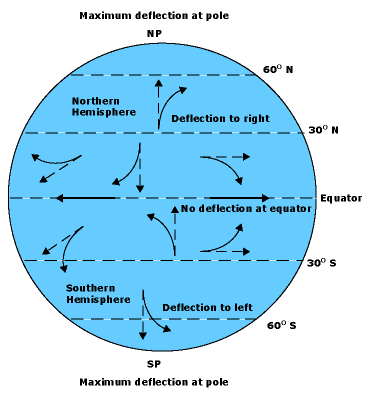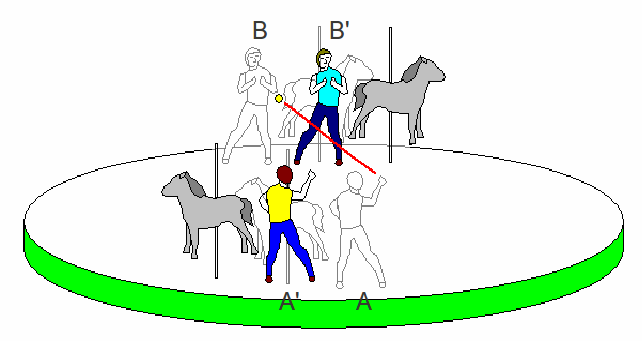The Coriolis force is a (fictitious) force which acts upon any moving body in a rotating system. In the rotating frame it behaves exactly like a real force (that is to say, it causes acceleration and has real effects). Coriolis force is a consequence of inertia. From an analytical viewpoint, to use Newton's second law in a rotating system, Coriolis force is mathematically necessary, but it disappears in a non-accelerating, inertial frame of reference.
The most well known application of the Coriolis force is for the movement or flow of air across the Earth.
The Earth rotates about its axis from west to east once every 24 hours. Consequently, an object moving above the Earth in a generally northerly or southerly direction, and with a constant speed relative to space, will be deflected in relation to the rotation of the Earth. This deflection is clockwise, or to the right, in the Northern Hemisphere and anticlockwise, or to the left, in the Southern Hemisphere.

Moving air undergoes an apparent deflection from its path, as seen by an observer on the Earth. This apparent deflection is the result of the Coriolis force. The amount of deflection the air makes increases with the speed and latittude, slowly blowing winds will be deflected only a small amount, while stronger winds will be deflected more, and winds blowing closer to the poles will be deflected more than winds at the same speed closer to the equator. The Coriolis force is zero at the equator.
Alternatively, consider children on a roundabout. At A one throws a ball directly to the position B of the other at that instant. The other child does not catch it because when the ball arrives at B, the child has moved to B'. Relative to both children the ball appears to move in a curve, as though there were a force acting, but in fact it is the children that are moving in a circle that makes it appear so. An external observer will see the ball moving in a straight line.

